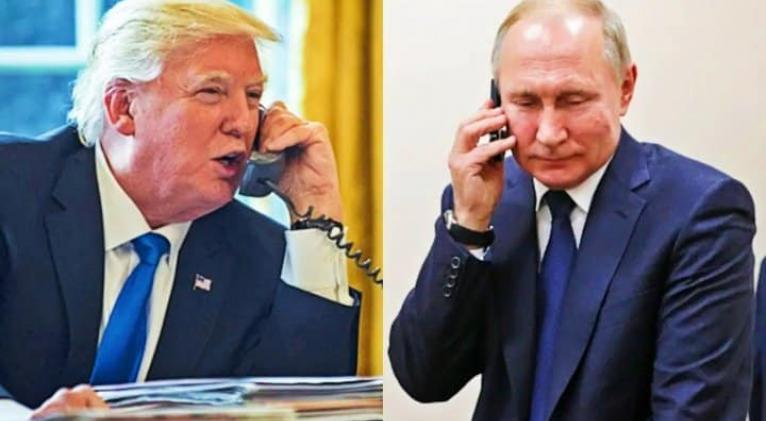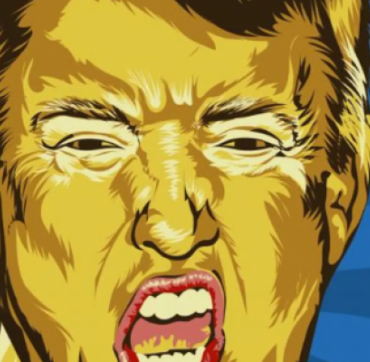Despite Triumphant Announcements from Trump, There’s Still No Clear Way Out of War in Ukraine
especiales

On Monday President Trump announced on his Truth Social network that Ukraine and Russia had begun “immediate negotiations” on a ceasefire. This announcement came after a telephone conversation between Trump and Vladimir Putin. A week after the failure of direct negotiations between Ukraine and Russia, the first since March 2022, which resulted in a simple exchange of prisoners, Trump had indicated his intention to speak directly to the Russian president.
The tone of the statement is triumphant, and for the moment both Ukrainian and Russian authorities seem to be moving in Trump’s desired direction: “Russia and Ukraine will immediately begin negotiations for a ceasefire and, more importantly, an end to the war,” Trump declared. For his part, Putin said he was “ready to work with the Ukrainian side on a memorandum regarding a possible future peace treaty defining a number of positions and will propose it,” according to the TASS agency. As for Ukraine, Zelenskyy indicated that he was unaware of the memorandum but that “once we receive it, we will be able to formulate our view accordingly, as we see it.”
But behind this apparent convergence, divisions persist at the heart of this frenetic diplomacy, and the lack of trust is palpable. Zelenskyy had asked Trump to make “no decisions” without his assent, while the European powers announced they would strengthen their sanctions after the exchange between Washington and Moscow. This is because none of the reactionary contradictions crystallized by these negotiations seem to have disappeared.
Putin is likely trying to buy time. Indeed, the Russian president can count on the tactical advantage of his armies on the Ukrainian front, a few days after launching the largest simultaneous drone attack since the beginning of the war. Moscow therefore has time, and the success of the negotiations is not in its immediate interests, as Michael Kimmage notes in Foreign Policy:
Russia has the means to gain the upper hand in a long war of attrition. It could encourage a U.S. withdrawal from the conflict, which would have a severe impact on Ukrainian morale, limit the daily operational capabilities of the Ukrainian military, and send a strong signal worldwide that Ukraine is incapable of maintaining its most important bilateral relationship.
As he points out, however, Russia’s military advantage is so precarious that it can’t wait too long either, hoping that Trump will tire and abandon Ukraine:
From a technical point of view, the momentum seems to be on Russia’s side, as it seizes square kilometers of Ukrainian territory, but this momentum is leading nowhere. For months, Russia has been trying in vain to take the Ukrainian city of Pokrovsk. This failure has been accompanied by colossal losses: an estimated 790,000 people have been killed or wounded since the beginning of the war (plus 48,000 missing), including more than 100,000 this year alone. If this pace continues, by the end of 2025, Russia will have more than a million casualties, with its strategic situation no better than in 2022.
Putin must therefore deal with Washington and cannot afford to alienate Trump, but he could just as easily decide that this new round of negotiations is not yet the opportunity he had hoped for.
While the U.S. president has achieved some diplomatic successes, notably during his Middle East tour and, shortly before that, during the negotiations between India and Pakistan, his Ukraine policy has been nothing short of a failure. More than 100 days after taking office, Trump has still not managed to fulfill his campaign promise to end the war.
Philip H. Gordon paints a bleak picture of Trump’s record on Ukraine:
The failure of Trump’s approach was predictable. He assumed he could bully Ukraine into giving in to Russia by adopting Russia’s narrative about the war and threatening to cut off U.S. aid to Kyiv. But he underestimated both what Russia actually wanted — total Ukrainian submission — and the determination of a fiercely independent Ukraine to oppose it. Worse still, by not including any threat of retaliation against Russia if it refused to compromise, Trump gave up much of his leverage without getting anything in return, essentially telling Moscow, “If you don’t accept my plan, I’ll step aside and let you have whatever you want” — hardly The Art of the Deal.
As several U.S. diplomats have pointed out, however, Trump wants to end the fighting, both to satisfy his image as a peacemaker and to limit the overextension of U.S. military forces, the limitations of which the operation in Yemen has shown, as the New York Times revealed. To do this, Trump has imposed several conditions on Ukraine to facilitate the signing of a ceasefire agreement, or even a peace plan, to the advantage of Russia, thanks to its main means of pressure: the extension of the colossal military support that the United States provides to Ukraine. Trump has also stated on several occasions that he would not hesitate to leave the negotiations if an agreement is not reached.
Yet the Kremlin’s resistance poses a major obstacle, so much so that some of Trump’s close advisers are calling for a maximum pressure strategy, not only on Zelenskyy, who was thoroughly humiliated during a visit to the White House at the end of February, but also on Putin. Neoconservative senator Lindsey Graham has proposed a bill to impose a tax of more than 500 percent on Russian petroleum products, striking at the heart of its economy. This proposal is supported by the Finnish president in an op-ed published on May 19 in the Guardian and by European leaders who are also considering artificially lowering the price of Russian oil to hit the country’s finances:
Graham, who discussed his sanctions plan with European foreign ministers last week, is widely expected to tailor the provisions of the text to specifically target foreign companies importing Russian energy. Graham, a Trump loyalist, presents his sanctions as a complement to Trump’s tariff policy, not an alternative. The original plan called for imposing 500 percent tariffs on goods from any country trading energy with Russia — a “shoot-the-gun” approach that Trump himself has abandoned in his trade war.
But this approach undermines an equally important objective for Trump: to loosen the ties between Russia and China, which requires going easy on the Kremlin. Trump thus indicated in his statement that he was ready to sign a substantial trade agreement with Russia once a hypothetical agreement is signed. In this situation, Trump will likely spare Putin by making Ukraine bear the brunt of the concessions, but the White House could always make a U-turn.
Whichever scenario Trump chooses — pressure on Ukraine, pressure on Russia, or outright withdrawal from the negotiations — and whatever the outcome, it will, in any case, be the Ukrainian workers and the popular classes who will pay the price. These negotiations once again demonstrate the utterly reactionary nature of this war. Putin’s Russia continues to protect the interests of its capitalists by establishing a “buffer zone” on its western border at the expense of the populations of neighboring countries. The United States and European imperialists have collaborated for almost three years to wage a “proxy war” against Russia, hypocritically monopolizing the issue of Ukraine’s national self-determination. Now that their alliance is weakened, tensions and contradictions are emerging between them, but they continue to pursue imperialist and reactionary goals. Absent from this war, which is still far from over, are the interests of the workers, and those of the popular sectors of Ukraine, Russia, and the entire continent.
Originally published in Révolution Permanente on May 20.














Add new comment